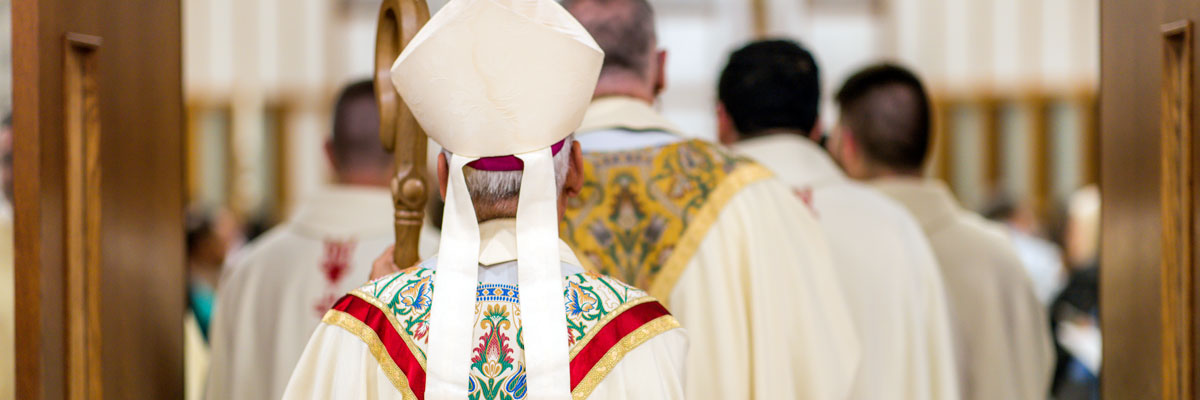Official Website of the
Catholic Diocese of Little Rock
Four evangelists’ symbols came from themes in their Gospels
Published: May 5, 2007
By Charles T. Sullivan
The word evangelist comes from the Greek meaning, “proclaimer of the Good News.” Certainly Jesus was an evangelist: “The Spirit of the Lord is upon me, because he has anointed me to bring glad tidings to the poor. He has sent me to proclaim liberty to captives and recovery of sight to the blind; to let the oppressed go free, and to proclaim a year acceptable to the Lord.” (Luke 4:18-19)
St. Paul, in his Epistle to the Ephesians, lists evangelists after apostles and prophets in the hierarchy of the Church. (4:11) Nevertheless, anyone who assists in spreading the “Good News,” whether by word (preachers and teachers) or by example (the calling of every baptized Christian), is an evangelist in the truest sense.
However, in Catholic tradition, the term “evangelist” has been used since the third century to refer to the authors attributed to the canonical Gospels: Matthew, Mark, Luke and John.
In the ancient world, the concept of authorship was much broader than it is today. Someone could be considered the author of a work simply if he was the authority behind it.
Modern literary criticism suggests that the actual Gospels themselves may have been composed over a period of many years by one or more “ghost writers,” each who (inspired by the Holy Spirit) had a hand in compiling, editing and preserving the distinctive style and theological insight that the Church subsequently linked to the four evangelists.
According to ecclesiastical tradition, Matthew was one of the 12 Apostles. He wrote his Gospel in Aramaic around 70 A.D. specifically for Christians converted from Judaism.
Mark, a disciple of Jesus, summarized the preaching of St. Peter into gospel form around 60-65 A.D. in Rome.
Luke, a medical man of pagan origin, was a companion of St. Paul and wrote his Gospel (along with the Acts of the Apostles) in Greek around 75 A.D.
The Gospel of John was the last to be written (around 90-100 A.D. in Ephesus), and the actual author may have been a close associate of the Apostle John who carefully redacted and faithfully recorded what he himself heard from one of the last living eyewitnesses to the Lord.
In the early Church, the “four living creatures” that encircle God’s throne in the Book of Revelation (4:7-8) became symbols for the evangelists.
These symbols originated from the four-sided creatures described by the prophet Ezekiel 600 years before the birth of Christ. “Within it (a storm wind) were figures resembling four living creatures that looked like this: their form was human, but each had four faces and four wings ... Each of the four had the face of a man, but on the right side was the face of a lion, and on the left side the face of an ox and finally each had the face of an eagle.” (Ezekiel 1:5, 6 & 10)
St. Jerome, in the latter part of the fourth century, attributed these symbols to the four canonical evangelists. The Gospel of Matthew begins with the Incarnation, so his symbol is a man (or an angel). Mark begins his Gospel with John the Baptist whose “voice crying out in the wilderness” was as solitary and powerful as a lion’s roar. Luke stressed the theme of sacrifice, so the figure of the ox was associated with him. And John’s Gospel, according to St. Jerome, achieved spiritual heights and therefore soared like an eagle.
Charles T. Sullivan, a member of St. Bernard Catholic Church in Bella Vista, has a master’s degree in theology from the University of Dallas.









